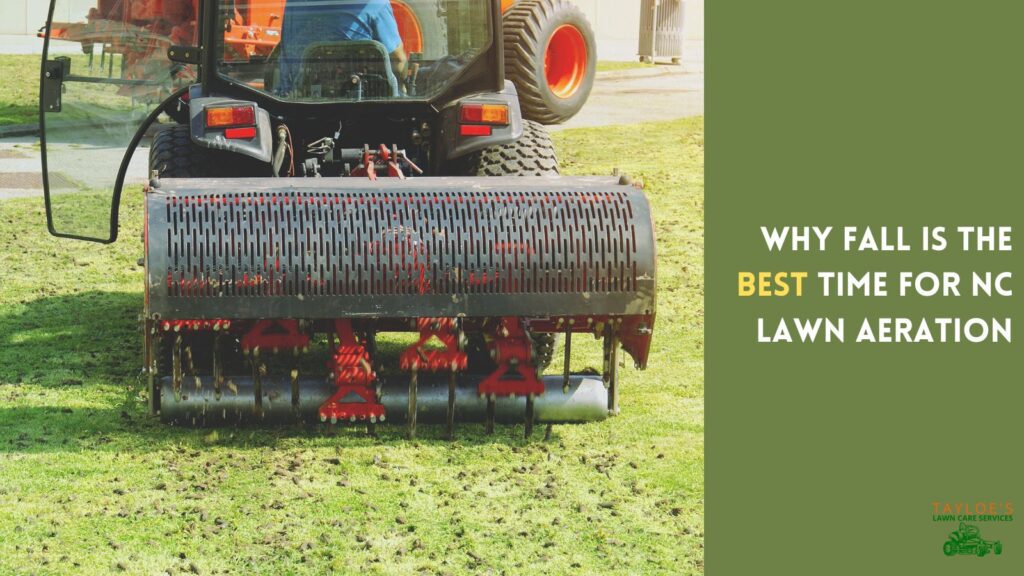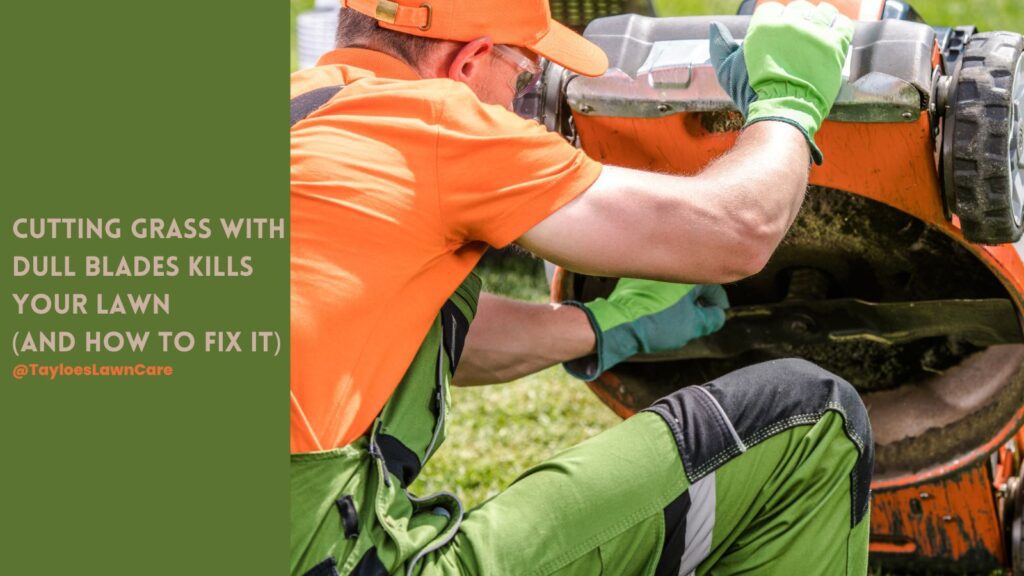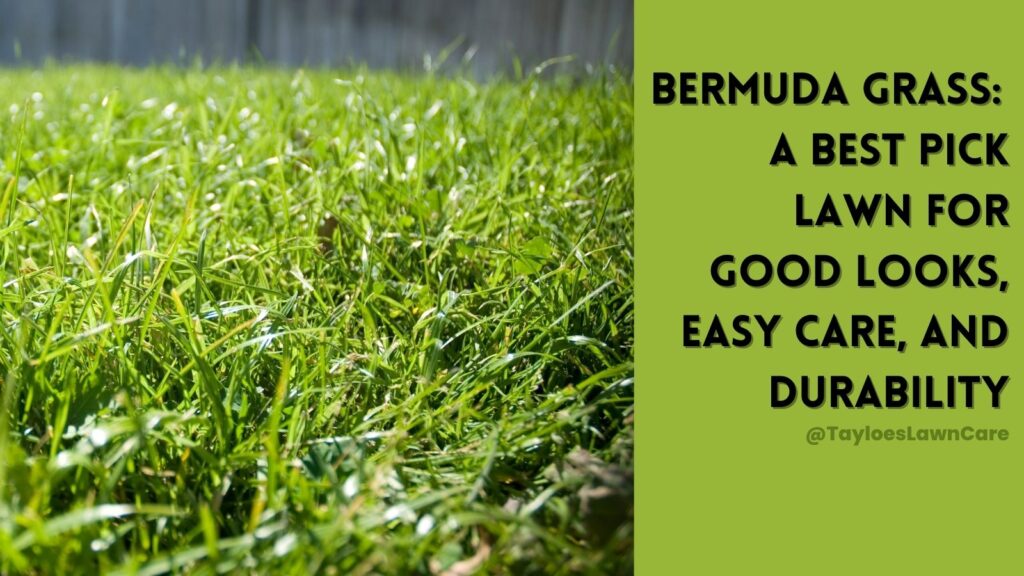Last Updated on: 16th August 2024, 05:41 am
Aerating the soil in the spring is a game-changer.
Soil aeration is integral to lawn maintenance and benefits those living in USDA plant hardiness zones 7 and 8 in eastern North Carolina. Soil aeration is loosening compacted soil and allowing the air, water, and naturally occurring nutrients to penetrate the soil. This process helps to improve the overall health of the soil and the lawn, resulting in a healthier, more vibrant lawn.
You might aerate through various mechanical, chemical, and biological methods. Each method has its advantages and disadvantages, but all of them can help improve soil quality.
This content will:
- Explain the three methods of aerating.
- Focus on mechanical aeration, which most homeowners prefer.
- Explain the benefits of soil aeration.
- Provide step-by-step instructions to aerate your soil.
Three Soil Aeration Methods
Most property owners use mechanical aeration due to its accessibility and affordability. Plus, some people are not thrilled at adding chemicals or biologicals to their yards–those means of aerating are more common for large-scale production. However, it’s worth understanding all options.
NOTE: Plan to aerate during the middle to late spring before it gets too hot! Most properties need this care every two years; however, if you have heavy soil compaction, try it annually.
1. Mechanical Soil Aeration
The most common method of soil aeration is mechanical. This method involves using a machine or tool to physically break up the soil, allowing air to penetrate it. This method is often used in areas where the soil is compacted, as it can help to loosen the soil and improve its drainage. It can also help reduce soil compaction, leading to poor root and plant growth.
2. Chemical Soil Aeration
Chemical aeration involves using chemicals to break down the soil particles and allow air to penetrate. This method is best for areas where the soil is too acidic or alkaline, as the chemicals can help to neutralize the pH levels. This process can help to improve the soil’s fertility and promote better root growth.
3. Biological Soil Aeration
Biological aeration is a process that uses beneficial bacteria and fungi to break down soil particles and allow air to penetrate. This method is best in areas where the soil is too wet or dry, as bacteria and fungi can help regulate moisture levels. This process can help to improve the soil’s fertility and promote better root growth.
Choosing the correct method of aeration for your particular soil type is essential, as each method has advantages and disadvantages. However, all of them can help improve soil quality and promote better plant health.
Benefits of Aerating the Soil
- Reduces compaction: Soil aeration can benefit your yard greatly, including improved drainage, increased fertility, and better root growth. It can also help reduce soil compaction, leading to poor garden yields.
- Reduces risk of plant disease: Aerating can help to reduce the risk of soil-borne diseases, as it can help to reduce the number of pathogens in the soil.
- Maintain soil health: Soil aeration is integral to maintaining healthy soil. It can help improve the soil’s fertility, drainage, and root growth and reduce the risk of soil-borne diseases.
- Better penetration of water and nutrients: Aerated soil can better absorb rainwater and soil nutrients. Therefore, you will rely less frequently on manual watering and fertilizing.
- Less flooding: Our region is prone to hot, dry early-summer seasons, late-summer and fall hurricanes, and tropical storms. Aerated soil will help to prevent flash flooding–and help the water drain faster after the next storm.
Step-by-Step Guide to Soil Aeration
Now that we’ve discussed the benefits of soil aeration, let’s look at how to aerate the soil. The following is a step-by-step guide to aerating the soil for a healthier lawn.
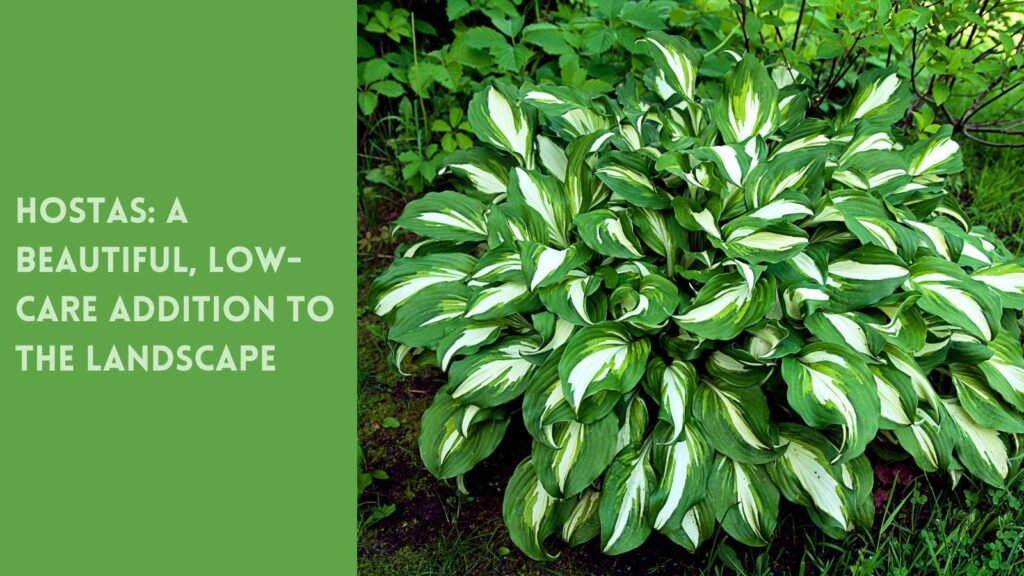
Step 1: Water the Lawn
The first step in aerating the soil is to water the lawn. The water will help to soften the soil and make it easier to aerate. Dampen the earth with long watering for a week to ten days before the day you plan to do this job. If you have had a lot of recent rainfall, you may be able to skip this–just be sure the top several inches of the earth below the lawn are damp.
Step 2: Choose an Aerator
The next step is to choose an aerator. Several styles of aerators are available, including manual aerators, powered aerators, and spike aerators. Since it takes several days to dampen the lawn sufficiently, use your waiting time to obtain an aerator.
Step 3: Prepare the Aerator
On the day you plan to work on aerating, you must prepare the aerator for use. This includes filling a power aerator with fuel or oil, checking the tire air pressure, and ensuring that all safety features are in place.
Step 4: Aerate the Soil
Once you’re ready to roll, you can begin aerating the soil. We recommend aerating in a criss-cross pattern to ensure the lawn is aerated.
Step 5: Clean Up
Once you have finished aerating the soil, cleaning up is essential. You need to pay attention to emptying the aerator, disposing of the debris, and cleaning the aerator. You will also have many little cores pulled out of the ground–rake them up, so they don’t mat the lawn.
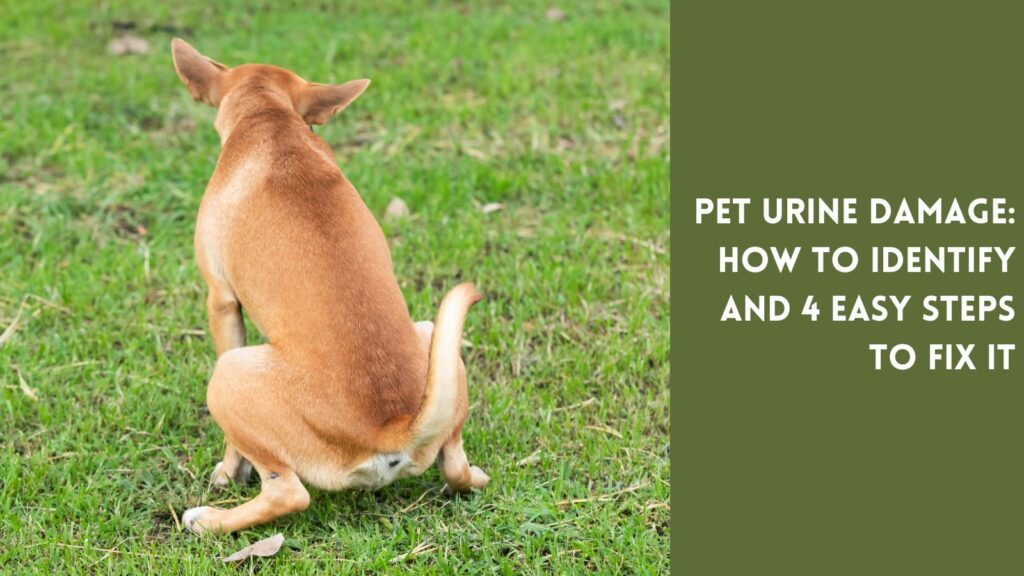
The Takeaway: Soil Aeration Plays a Key Role in Your Lawn Care Program
Aeration is a vital function in having a healthy lawn. We have hot, dry early summertime in eastern NC followed by flooding tropical storms. Not only will you improve grass health, but you may also increase your yard’s ability to drain faster after a tropical event.
If you need help with your lawn care needs, Tayloe’s Lawn Care Services can help. Connect with us today.

Author Profile

- Deborah Tayloe is the CEO and co-founder of Tayloe's Lawn Care Services, LLC. She has a B.S.Ed and holds certificates in soil and water management and herbology from accredited programs.
Latest entries
 Trees and ShrubsApril 22, 2025Boxwood Blight: Early identification and isolation
Trees and ShrubsApril 22, 2025Boxwood Blight: Early identification and isolation Flower GardenApril 8, 2025John F. Kennedy Rose: Hybrid tea rose with elegant white blooms
Flower GardenApril 8, 2025John F. Kennedy Rose: Hybrid tea rose with elegant white blooms Vegetable GardenMarch 24, 2025Trellis vegetables provide an abundant vertical garden harvest
Vegetable GardenMarch 24, 2025Trellis vegetables provide an abundant vertical garden harvest GardeningMarch 17, 2025Are coffee grounds good for compost?
GardeningMarch 17, 2025Are coffee grounds good for compost?

